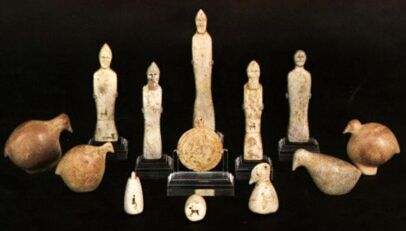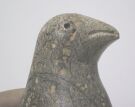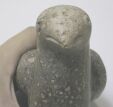
Lake Van Figurines

Lake Van Figurines
Made of totally solid but quite brittle dickite stone, I think of Morse hardness of about 3, these scrulptured images of human and animal figurines lack the very details like feathers and legs. However, the overall shape and the inclusion of just necessary details like the eyes and the beak (for pigeons), is the reason of its beauty and appreciation. This is exactly the characteristic of Neolithic art. Scientific analysis of several examples in the Cleveland Museum of Art in the surface polishing and age cracks have confirmed the Neolithic dating.
 |
 |
Reference: Animals in Ancient Art from the Leo Mildenberg Colection, published by the Cleveland Museum of Art.